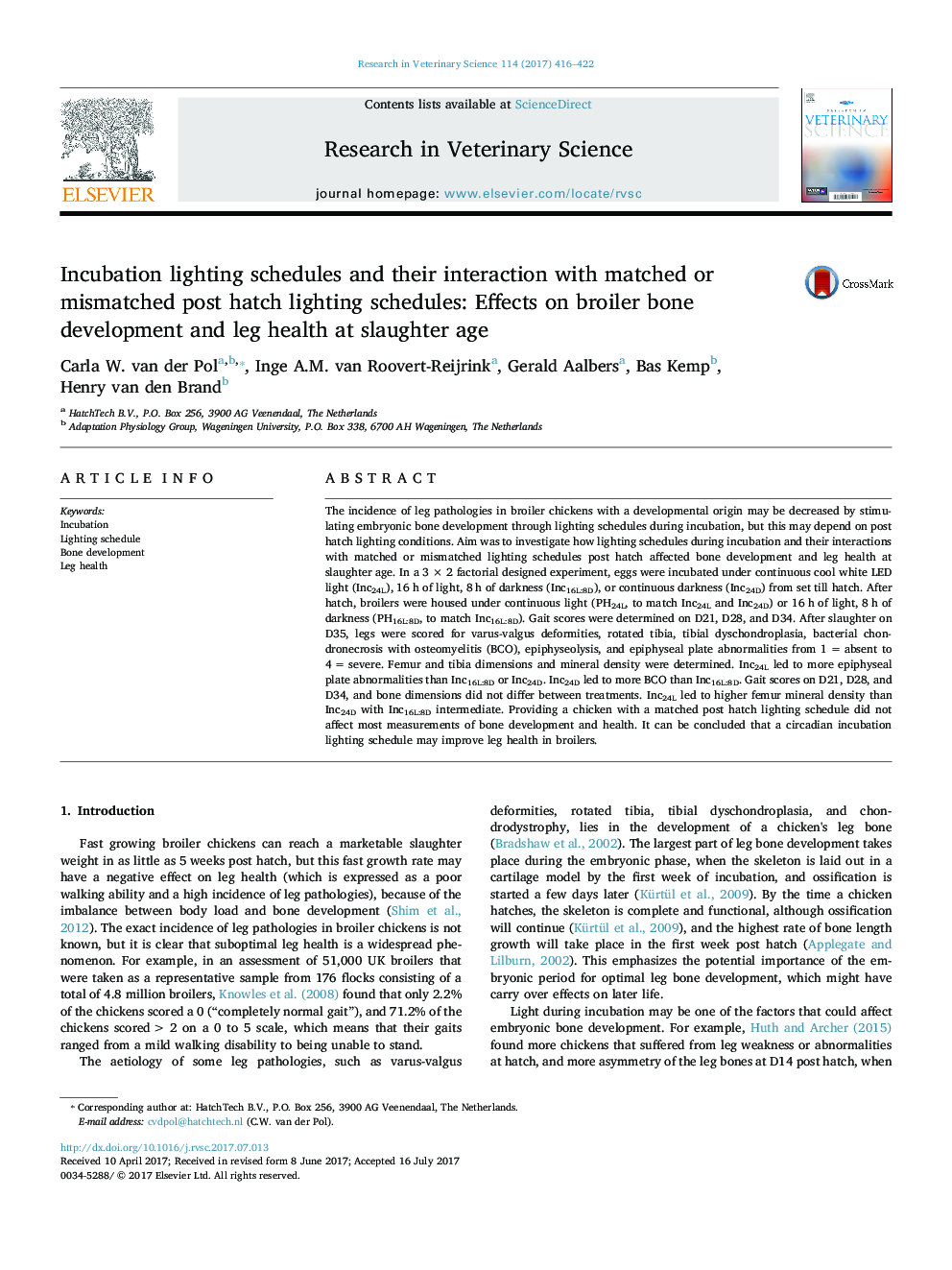| Article ID | Journal | Published Year | Pages | File Type |
|---|---|---|---|---|
| 5543925 | Research in Veterinary Science | 2017 | 7 Pages |
Abstract
The incidence of leg pathologies in broiler chickens with a developmental origin may be decreased by stimulating embryonic bone development through lighting schedules during incubation, but this may depend on post hatch lighting conditions. Aim was to investigate how lighting schedules during incubation and their interactions with matched or mismatched lighting schedules post hatch affected bone development and leg health at slaughter age. In a 3Â ÃÂ 2 factorial designed experiment, eggs were incubated under continuous cool white LED light (Inc24L), 16Â h of light, 8Â h of darkness (Inc16L:8D), or continuous darkness (Inc24D) from set till hatch. After hatch, broilers were housed under continuous light (PH24L, to match Inc24L and Inc24D) or 16Â h of light, 8Â h of darkness (PH16L:8D, to match Inc16L:8D). Gait scores were determined on D21, D28, and D34. After slaughter on D35, legs were scored for varus-valgus deformities, rotated tibia, tibial dyschondroplasia, bacterial chondronecrosis with osteomyelitis (BCO), epiphyseolysis, and epiphyseal plate abnormalities from 1Â =Â absent to 4Â =Â severe. Femur and tibia dimensions and mineral density were determined. Inc24L led to more epiphyseal plate abnormalities than Inc16L:8D or Inc24D. Inc24D led to more BCO than Inc16L:8D. Gait scores on D21, D28, and D34, and bone dimensions did not differ between treatments. Inc24L led to higher femur mineral density than Inc24D with Inc16L:8D intermediate. Providing a chicken with a matched post hatch lighting schedule did not affect most measurements of bone development and health. It can be concluded that a circadian incubation lighting schedule may improve leg health in broilers.
Keywords
Related Topics
Life Sciences
Agricultural and Biological Sciences
Animal Science and Zoology
Authors
Carla W. van der Pol, Inge A.M. van Roovert-Reijrink, Gerald Aalbers, Bas Kemp, Henry van den Brand,
